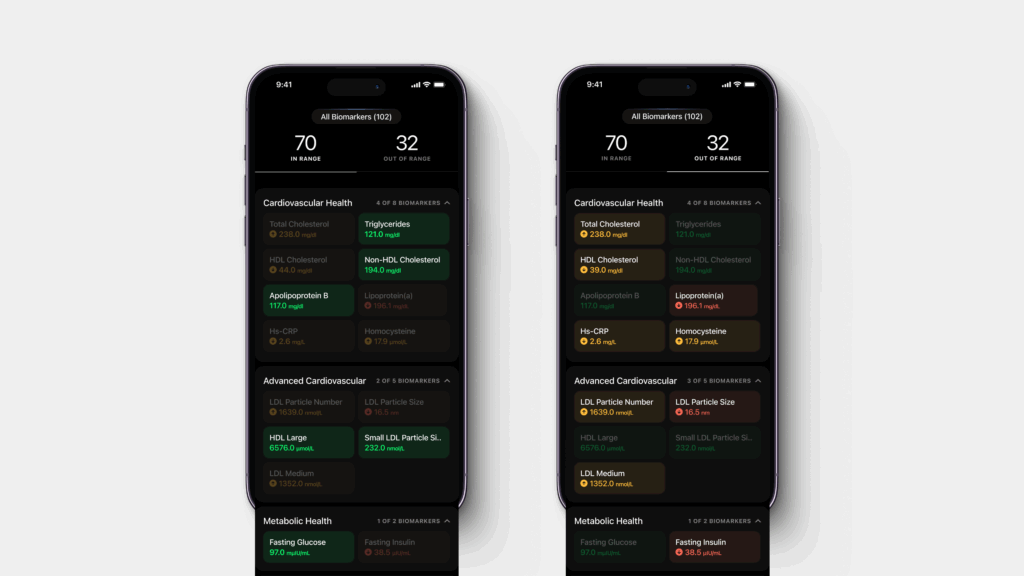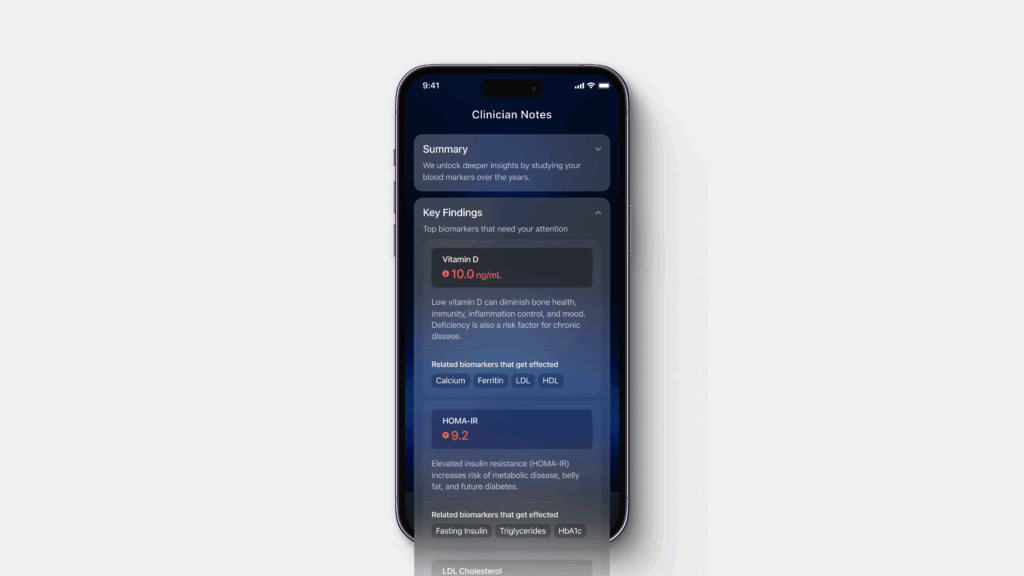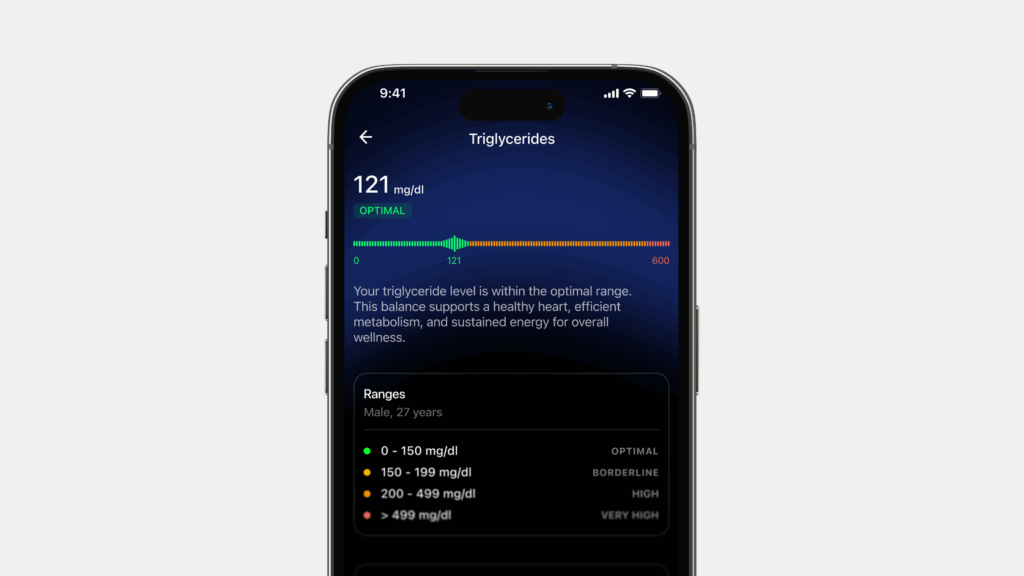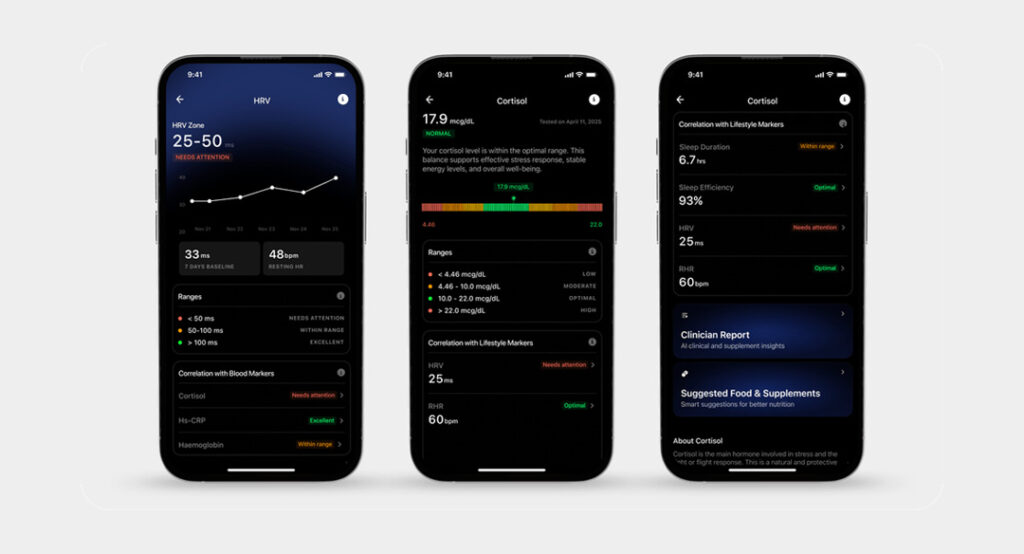A complete blood count (CBC) is one of the most accessible, affordable, and insightful tests in modern medicine — and it’s a core part of Ultrahuman’s Blood Vision panel.
The CBC is a fundamental diagnostic tool, and provides valuable information about your overall health. It can help to diagnose a wide range of conditions, including anemia, infections, and certain cancers.
With a single blood draw, it helps assess everything from oxygen delivery and fatigue risk to immune readiness and recovery status.
Below, we outline what each marker means to help you understand what makes up a Complete Blood Count test.
CBC Markers explained
| Marker | What It Measures | Why It Matters |
|---|---|---|
| White Blood Cell Count (WBC) | Number of white blood cells | High or low levels may signal infection, inflammation, immune issues, bone marrow dysfunction and even certain kinds of cancers. |
| RBC Count | Number of red blood cells | Low count = anemia; high count may indicate dehydration or other conditions |
| Hemoglobin | Oxygen-carrying protein inside red blood cells | Low = anemia; high = dehydration or possible disease |
| Hematocrit | Percentage of blood made up of red blood cells | Helps assess anemia and hydration status |
| MCV | Average size of red blood cells | Low = likely iron deficiency; high = possible B12 or folate deficiency |
| MCH | Average amount of hemoglobin per red cell | Low = iron deficiency; high = some vitamin-deficiency anemias |
| MCHC | Hemoglobin concentration in red cells | Helps classify type of anemia; low = iron deficiency |
| RDW | Variation in red blood cell size | High = mixed anemia types or disrupted red cell production |
| Platelet Count | Number of platelets | Low = bleeding risk; high = possible inflammation or bone marrow response |
| MPV | Average size of platelets | High MPV = more active or younger platelets; helps assess platelet function |
Red blood cell markers
Your red blood cell (RBC) markers show how efficiently your body delivers oxygen — a crucial factor for energy, endurance, and cognitive performance.
- RBC Count: Reflects the total number of oxygen-carrying red blood cells. Low counts can indicate anemia; high counts may reflect dehydration or other imbalances.
- Hemoglobin: This oxygen-carrying protein is central to red cell function. Low hemoglobin signals anemia and reduced oxygen delivery to tissues.
- Hematocrit: The percentage of your blood composed of red cells. Low hematocrit = possible anemia; high = dehydration or blood thickening.
Red cell markers
These markers offer clues about why anemia exists — from iron or B12 deficiency to more complex causes.
- MCV (Mean Corpuscular Volume): Indicates average red blood cell size. Small cells = iron deficiency; large cells = possible B12 or folate deficiency.
- MCH (Mean Corpuscular Hemoglobin): Measures how much hemoglobin each red blood cell contains. Lower values = less oxygen-carrying capacity.
- MCHC (Mean Corpuscular Hemoglobin Concentration): Shows how concentrated hemoglobin is inside cells. Helpful in classifying anemia types.
- RDW (Red Cell Distribution Width): Assesses variation in red cell size. High RDW often means mixed nutrient deficiencies or unstable blood production.
White blood cell markers
- WBC Count (White Blood Cell Count): Gauges the total number of white blood cells. An elevated WBC can signal infection or inflammation, while ow WBC may reflect immune suppression or bone marrow problems. This marker gives an early read on your immune status and recovery potential, and can even flag certain kinds of cancers.
Platelets markers
- Platelet Count: Measures the number of clot-forming cells in your blood. Low levels increase bleeding risk; high levels may reflect systemic inflammation or other conditions.
- MPV (Mean Platelet Volume): Tells you the average size of your platelets. Larger (younger) platelets are often more active and can signal increased turnover or recovery activity.
Why this matters
Your CBC is more than just a blood test — it’s a diagnostic dashboard. From flagging early signs of anemia or nutrient deficiency to uncovering immune imbalance and inflammation, it helps you act before symptoms derail your health or performance.
By tracking these markers regularly through Blood Vision, you get a clearer picture of your internal resilience — and a chance to course-correct before problems take root.








